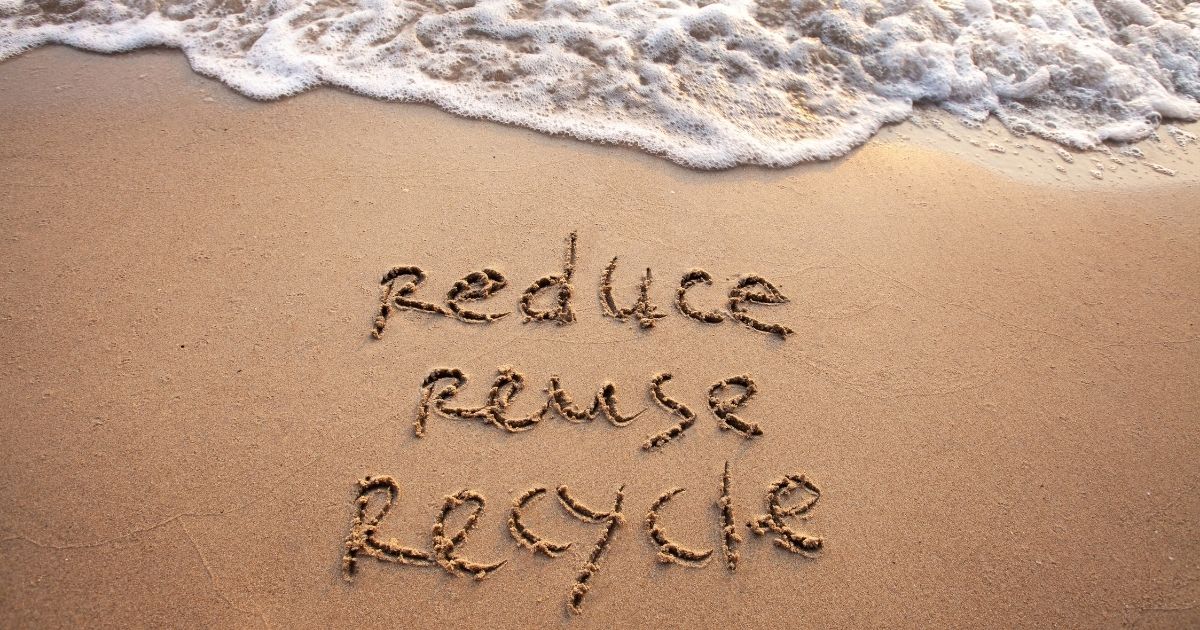By Shannon Bergstrom
Our ocean is choking in plastic — that is clear when we consider that almost 9 million tons of plastic end up in them annually. While some of that plastic comes from fisheries, illegal dumping, and nautical activities, most of it is actually land waste. In one way or another this waste finds its way to the ocean, destroying ecosystems and injuring marine animals.
When faced with such an enormous problem, it’s hard to imagine what we could do to solve it. And yet, many believe that the solution does exist and that it lies in implementing the circular economy.
What Is Circular Economy?
To fully understand the circular economy, you first need to know what kind of economy we live in. With its “produce-consume-discard” approach, the linear economy has been the dominant one for decades, as it’s the most convenient one. In this type of economy, you buy a product, use it for a while, and eventually throw it away. Then, that product ends up in a landfill, where it decomposes for decades. Or, in the case of plastic, centuries.
In the linear economy, single-use products are quite common. For instance, we’ve all used plastic utensils, single-use plastic bags, water bottles, and plastic packaging before. These items waste a lot of resources for an incredibly small pay-off — you use them once and throw them away. Yet, the consequences of such products are enormous, as much of that plastic eventually ends up in the ocean.
But the circular economy has different values and a different approach. Unlike the linear economy, the circular one attempts to create as little waste as possible. Its core principle is “repair-reuse-recycle,” meaning that no item should be discarded as soon as it breaks or stops working. On the contrary, we should find ways to repair it, or if we can’t, dismantle or recycle it for new materials.
Naturally, such an economy doesn’t support single-use plastic items whatsoever. In fact, nothing that can be used only once has a place in the circular economy. When it comes to plastic, it wouldn’t be entirely banned, but its use would be drastically reduced and limited only to recyclable plastics.
How Would Circular Economy Deal with Plastic?
In the circular economy, the main idea isn’t to deal with waste at the end of a product’s life. If that were the case, it would run into the same issue as the current economy — where to store all the waste. Instead, the circular economy focuses on the product design stage, as its supporters hope to create items with as little waste potential as possible.
What does that mean for plastic, specifically? Well, in most cases, entirely replacing it with other, more eco-friendly materials. After all, plastic’s effect on the environment is particularly dire, as it takes it up to 500 years to decompose. That means that all plastic that’s ever been produced still exists out there somewhere!
So, we’ll start implementing the circular economy principles by scrutinizing each item we produce and deciding whether it needs plastic elements. For instance, plastic packaging may often be unnecessary, yet it's quite common in the current economy. In the circular one, we’d do away with it whenever we can. And if we do need packaging, we would strive to make it from other, biodegradable materials.
When it comes to products that must have plastic elements, we need to ensure they are reusable and encourage consumers to treat them as such. That requires a certain mindset change, which is one of the hardest parts of implementing the circular economy. On top of that, we need to develop more advanced technologies for reprocessing used plastic and thus help it feed back into the circularity.
How Circularity Helps the Ocean
As things stand now, plastic is one of the biggest enemies of marine wildlife and ecosystems. Many animals end up trapped in it or digesting it, leading to injuries and death. Some species, such as turtles and sea lions, are actually endangered because of our plastic waste.
And it’s not just animals either — marine plants also die out due to toxins and pathogens released from plastic waste. Also, let’s not forget that millions of people regularly eat foods from the ocean, which means we are also poisoning our own food supply.
Clearly, our negligence has caused a lot of harm already, but we can try to put an end to it. And since circularity strives to eliminate not just plastic but all waste, it might be just the solution we need. If no more plastic ends up in landfills, the chance of it finding its way to the ocean is much lower. Reducing the amount dumped into the sea would be the first step, with complete elimination as the end goal.
In Conclusion
Plastic waste doesn’t only spoil the beauty of our ocean, but it also seriously harms the rich wildlife that lives within them. Although the damage we’ve already caused may seem irreversible, there are ways to at least minimize it. And one such way is implementing the circular economy and significantly reducing our waste production.
Is such a thing even possible, though? And would it really save our ocean? Complete circularity may be difficult to achieve, but it’s the only recourse we have. And if we want it to have a significant impact, we need to start implementing it right now, before it’s too late.
Author Bio
Shannon Bergstrom is a LEED Green Associate, TRUE waste advisor. She currently works at RTS, a tech-driven waste and recycling management company, as a sustainability brand manager. Shannon consults with clients across industries on sustainable waste practices.





